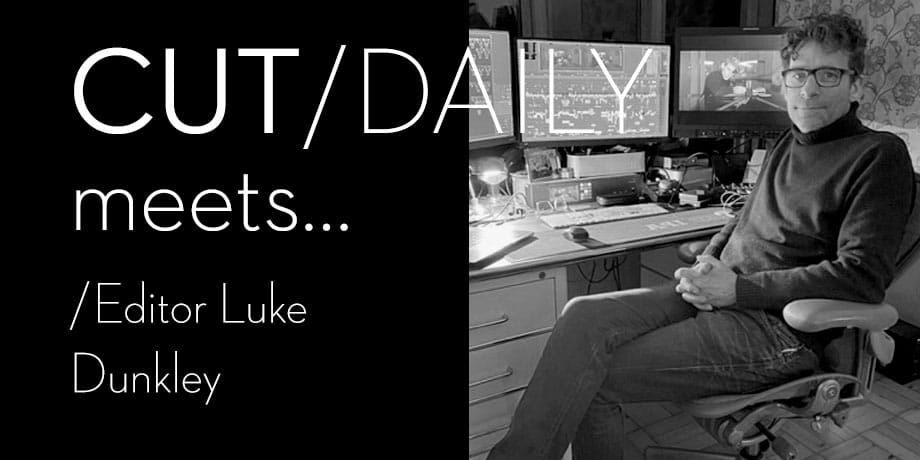#450 – Cut/daily Meets... Editor Luke Dunkley

It's a small world after all.
In a six-degrees of separation moment, when I chatted with Editor Peter Oliver about his Emmy-winning work for Baby Reindeer, he credited his start in the industry to Editor Luke Dunkley falling off his bike.
Today, the degrees fall into place, and we have the pleasure of learning from the man himself!
My favourite things Luke had to share?
“Work hard. Trust your instincts. Don't take it personally.”
Luke has been nominated for 3 BAFTA TV Awards, all while editing a whose-who of top-tier TV shows, including:
- The Day of The Jackal
- The Crown
- Slow Horses
- Utopia
- Solos
- The Third Day
Not to mention several feature films, including American Animals, The Secret Garden, and Dark River.
The trailer makes brilliant use of Radiohead's Everything in It's Right Place, which is also used at the start of Episode 1, edited by Luke.
I asked whether he sourced it for the episode or if the trailer inspired the selection:
I did. We had it on the rough cut very early on, some of the producers weren’t sure about it so we tried 30 other tracks and three months later came back to the Radiohead.
It’s the first track that people hear so it needs to be right, so I completely understand why it went like that.
It's a fun, free jolt of creative inspiration!
What aspect of working on The Day of The Jackel are you most proud of - even if no one else might notice?
I sourced most of the needle drops in my episodes - that doesn’t happen that often.
What was the biggest challenge you faced on the show, and how did you overcome it?
Making sure that there was a cat-and-mouse element to the structure and cross-cutting, even though the two protagonists won’t meet for another few episodes.
How do you find the balance within a scene or sequence of slow-burn tension whilst maintaining a sense of pace?
(How do you take your time without overstaying your welcome?)
What a great question.
This is perhaps the hardest task of any non-verbal sequence.
Dialogue sequences have to have a keen balance for them to work well, but you have the scripted beats baked in to hit, and you focus on them, together with performance.
For both scenarios, I will build the scene as scripted and shot, and then quite often (especially for non-verbal - it could be a montage or some actuality) I will re-watch back without any sound.
This is great for asking: “Are the images telling the story we want to tell and where can we lean into it more and where have I gone too far?”
Another way to gauge a scene/sequence is to watch it in the edit suite with someone who hasn’t seen it before.
Like watching it mute, you view it differently, and almost always you will know, while screening it, where it’s not working.
